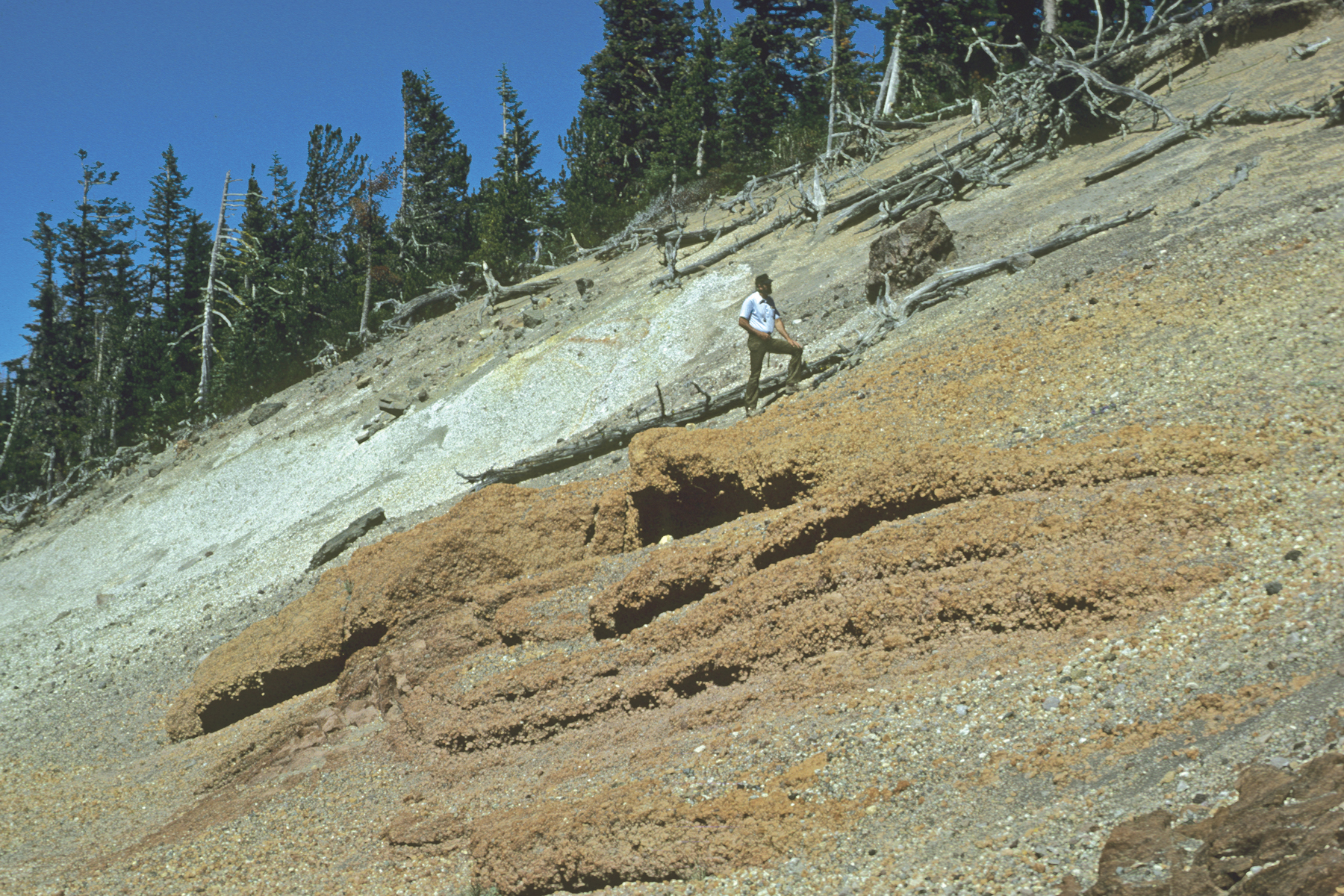
Deposits Above Cleetwood
10. Deposits of the climactic eruption exposed in road cut on Rim Drive above Cleetwood Cove. Well-bedded and sorted climactic pumice fall (unit cp) is light gray to white on left but becomes increasingly oxidized reddish and compacted (fused) stratigraphically downward where layers drape the underlying craggy top of the Cleetwood rhyodacite flow. The oxidation resulted from trapping of air and its reaction at high temperature with iron in the pumice through addition of heat from the lava, which also softened the pumice and caused it to compact. Because the climactic pumice-fall deposit is affected in this way only on the surface of the Cleetwood flow, these features are evidence that this lava was still hot at the time of the climactic eruption. The rhyodacite lava crops out below the bedded pumice at the lower left and at the lower right corner of the photograph. Boulders at top of left half of road cut and the large block to right of person are clasts in lithic breccia (unit cb) that here rests on the pumice fall without intervening Wineglass Welded Tuff. The lithic breccia and accompanying mafic scoria clasts were deposited by pyroclastic flows of the ring-vent phase of the climactic eruption, during collapse of Crater Lake caldera. The channel in unit cp in which the large lithic block occurs may have been cut by the same pyroclastic flows. Pumice lapilli and crystal-rich ash migrating downslope obscure part of the road cut exposure.
Photograph by Charles R. Bacon.